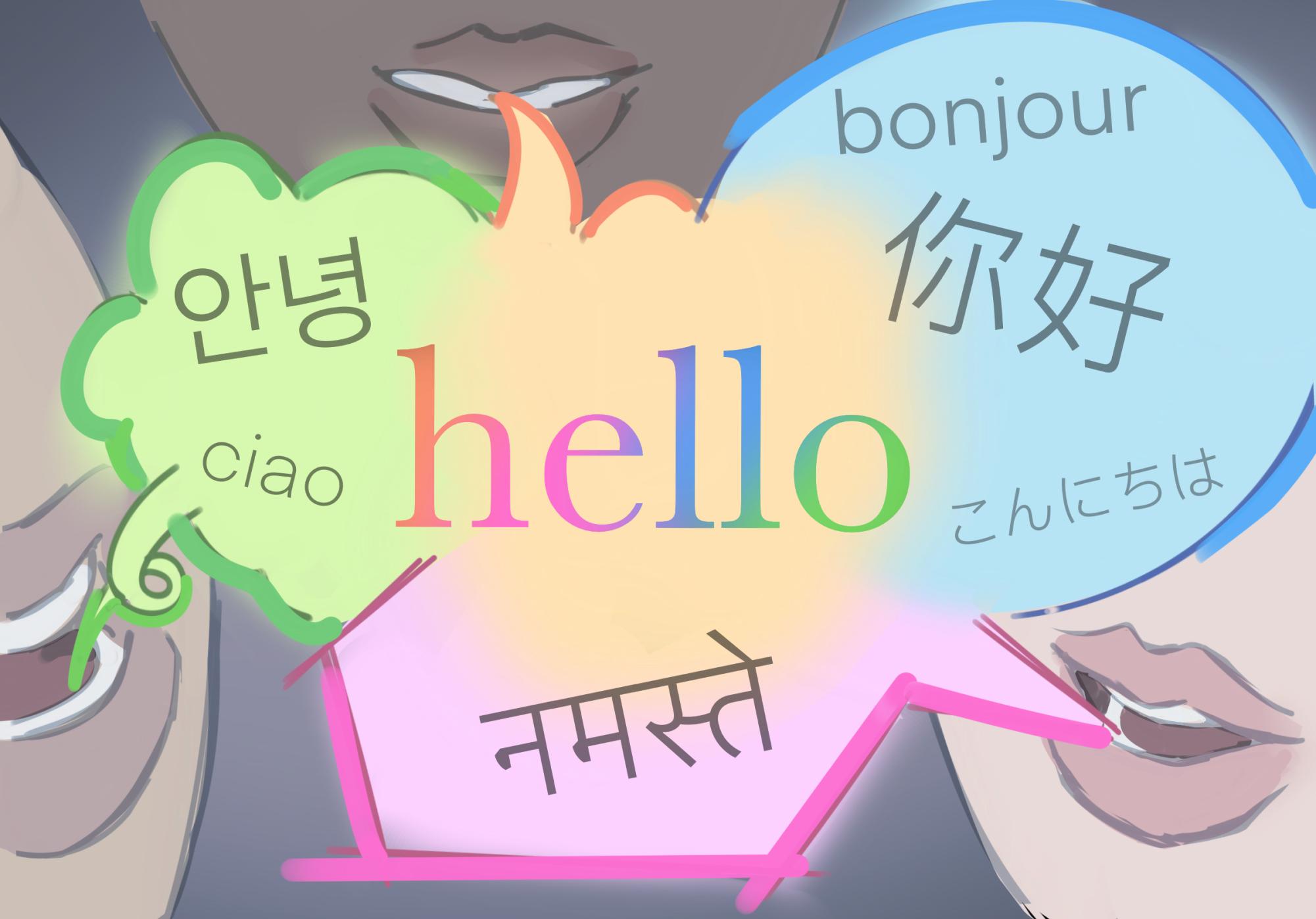While taking classes at school, a student might speak to teachers in formal English during class discussions, while using casual slang with friends in the hallways. However, as soon as they step through their home’s front door, they immediately switch to a seamless blend of Spanish and English that can puzzle monolingual listeners. This is code-switching, a linguistic phenomenon where multilingual speakers alternate between languages depending on the situation.
Sophomore Jennifer Liu immigrated to the U.S. from China in eighth grade, and began code-switching because she struggled to adapt to swapping from Mandarin to English. After joining Harker in ninth grade, she noticed students were less confused when she code-switched due to Harker’s larger population of multilingual speakers compared to her predominantly white middle school.
“People at Harker are slightly more understanding because there’s a bigger variety of cultures,” Jennifer said. “A lot of people are multilingual and that makes it normal for you to speak multiple languages. I remember when I was in middle school, when my mom would call me and I would speak Chinese to her, and they would ask, ‘Why are you not speaking English?’”
Harker alumna Ritu Belani (‘24), researched different types of code-switching in her paper “Automatic Identification of Code-Switching Functions in Speech Transcripts,” where she documented specific patterns of social contexts where someone might code-switch. For example, they might struggle to recall a word in English, the dominant language, or switch to their native language during moments of intense emotion.
“The way that you think might be very mixed in languages, kind of going in and out,” Ritu said. “You’re able to show that side of yourself in conversation when you’re around people like you, where you feel comfortable doing that, and in other environments, people will just be speaking one language. You don’t code-switch all the time with different people, it’s very much dependent on who your audience is.”
Jennifer explained that the language she uses also depends on the conversation topic. If she is talking to a multilingual friend about an event, trend or even meme that is more prevalent in China than the U.S., she’ll use Mandarin, because it is easier for her to find the right words to describe aspects of Chinese culture.
“Even if I talk to a friend that is completely multilingual, I would switch between both languages, not because I’m more comfortable with either one, but because of which context works better,” Jennifer said. “For example, if I saw something on Chinese social media I would share it with her in Chinese, but if we’re talking about something that happened in history class, then I would definitely say it in English.”
Linguistics Club officer junior Linda Zeng learned about code-switching during a club lecture and now researches the topic by training models to identify code-switching on social media. Linda highlighted how code-switching allows people to embrace their authentic culture in environments where their native language is not dominant.
“So many people code-switch without knowing that they’re actually code-switching,” Linda said. “It comes so naturally to people that they don’t need to classify it. A lot of times code-switching is a form of cultural resistance – when there’s a certain language you have to speak, but there’s another language that you identify with, so you end up switching between them. A lot of people don’t actually understand that.”
Code-switching sometimes results in the creation of hybrid languages when speakers mix words and phrases from two languages in conversation. Ritu first gained interest in code-switching after taking a UC Santa Cruz course where she learned about Spanglish as a linguistic and cultural phenomenon. Although Spanglish and other language mixtures are not classified as official languages, they define the cultural identities of those who speak it, allowing them to honor their original culture while adapting to a new environment.
“After I took this class, I really did realize that code-switching is a very natural thing to do, especially if I’m around someone who speaks both languages,” Ritu said. “We’re always mixing languages and just creating new hybrids, which is really cool.”
Despite being shaped by social and cultural contexts, code-switching is ultimately a neurological process. Multilingual speakers often do not consciously decide to switch languages. Their brains instinctively choose the most effective words or phrases from either language to convey meaning. This natural shift makes it difficult for monolingual speakers to understand the language challenges that multilingual speakers face.
Jennifer recalled struggling to find English equivalents for common Mandarin phrases and idioms when she first arrived in the U.S. For instance, Jennifer brought up the Mandarin phrase “本末倒置,” pronounced běn mò dào zhì. The phrase translates literally to “inverting the root and branch,” but is the equivalent of the common English idiom “putting the cart before the horse.” Despite having the perfect Mandarin phrase in her head, she was not able to translate it to English quickly enough during a fast-paced conversation.
“It’s really easy for people that are born in the United States or have lived here all their life to just come up with words in their mind,” Jennifer said. “That’s how you just talk naturally. But when I first came, I stumbled on words a lot, and it was really awkward in the beginning. Sometimes I would say something weird and wrong, and I would realize three seconds after I stopped talking.”
Awareness and empathy are key to embracing the linguistic and cultural diversity that code-switching showcases. Recognizing the fluidity in the boundaries between languages can minimize misunderstandings and create a more inclusive environment for multilingual speakers.
“There’s a lot of people for whom English isn’t their first language, and code-switching is so natural to them,” Linda said. “Identifying that similar language pattern with them or understanding why people code-switch is so important to understanding their identities and what cultures they come from.”



